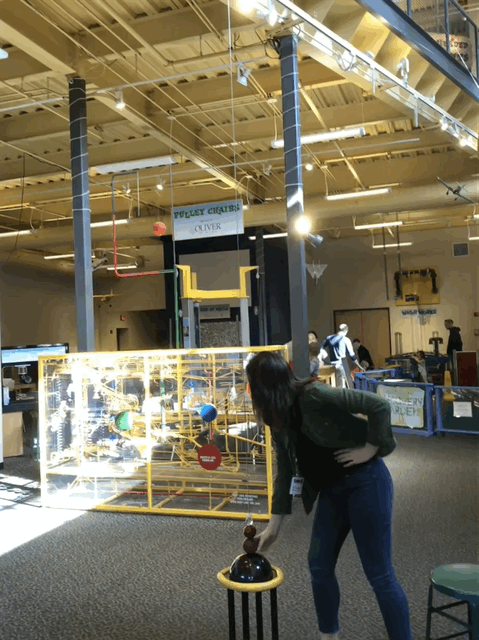There is one WonderLab exhibit that you always have to reach out and touch. It stands right in the entrance to the gallery. Playing with it is almost like a rite of passage.
It consists of a long wire running to the ceiling and a stack of four balls of descending size. Lift the stack of balls, drop them, and watch the small white ball at the top of the stack shoot up the wire.
It becomes sort of a game. How high can I get the white ball to go? How much do I lift the bottom ball? It delights small children and challenges older ones.
But who would have thought that those bouncing balls are actually teaching visitors about one of the most spectacular astronomical phenomena?
That’s right, I said astronomical phenomena. The exhibit is actually called the Supernova Balls.
A supernova is a massive explosion generated by a dying massive star. After the star uses up its hydrogen and helium, the core collapses and sends out an explosion of energy.
The Supernova Balls demonstrate how the energy causing the supernova explosion is 
Iron is important because once the star starts producing it, it doesn’t have enough energy to fuse iron into other elements and release more energy. This causes the star’s forces to become unbalanced: the outward pressure produced by reactions between atoms is no longer enough to counteract the inward gravitational attraction between those atoms.
This causes the core to collapse and particles of the star’s atmosphere to shoot away from the star, tearing it apart. The heavy iron atoms slam into lower mass particles and rocket them off into space, causing extreme heat, energy and light. Some of the accelerated particles from supernovae across the universe even reach us here on earth and we can detect them here at WonderLab!
But not all stars go supernova. In fact, a star has to be at least eight times as massive as our sun to go out with a bang, so don’t worry about getting caught in one here on Earth. No matter how many disaster movies you’ve seen with an exploding supernova Sun, it isn’t actually possible.
So, next time you watch that ball shoot up the wire, remember that somewhere out in the universe that same thing is happening to particles in a massive star, ready to explode!
The Writer: Harper Humphrey is a 21-year-old Astronomy geek who loves to get excited about physics. She hopes to communicate her love of science through intelligent, witty writing and is pursuing a double major from Indiana University in Astronomy and Journalism. In her spare time she builds sets for the Indiana University opera program and experiments with her crock pot.


 The Writer: Harper Humphrey is a 21-year-old Astronomy geek who loves to get excited about physics. She hopes to communicate her love of science through intelligent, witty writing and is pursuing a double major from Indiana University in Astronomy and Journalism. In her spare time she builds sets for the Indiana University opera program and experiments with her crock pot.
The Writer: Harper Humphrey is a 21-year-old Astronomy geek who loves to get excited about physics. She hopes to communicate her love of science through intelligent, witty writing and is pursuing a double major from Indiana University in Astronomy and Journalism. In her spare time she builds sets for the Indiana University opera program and experiments with her crock pot.
Leave A Comment